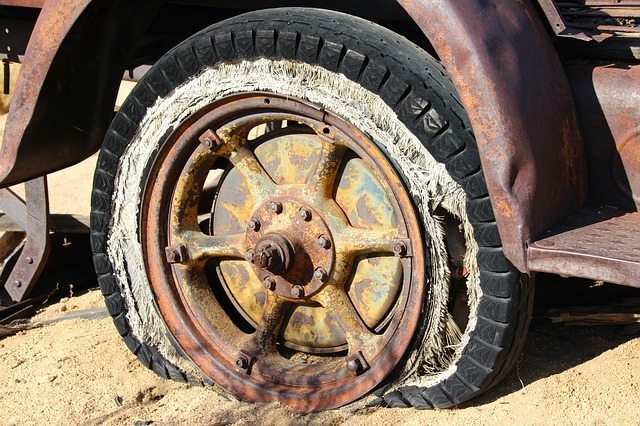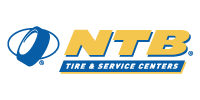
SHOP for TIRES
When to Repair or Replace Tires

After getting a flat tire, you are faced with the decision of repairing or replacing the tire. Obviously, it is preferable to repair the tire, as it is much cheaper than buying a new one. It is usually possible to repair the tire in most cases. If the tire needs to be replaced, then there are some affordable options available on the market today. Follow the guidelines below to decide whether your tire needs to be replaced or repaired.
Determine the Source of the Leak
The most noticeable sign of a damaged tire is the loss of air pressure. The pressure loss could cause several different types of damage. The tire could leak air slowly, or it could blow out completely. In the case of a blowout, the damaged area is easily noticeable. For a slow leak, check the tire treads, sidewall, and tire bead beneath the edge of the rim to locate the source of the leak.
It is often easier to determine the source of damage once the tire has been removed from the vehicle. Checking for damage while the tire is removed is also more effective. The interior of the tire will show if the inner liner is intact or damaged. Sidewall chafing can cause the tire to crumble into fragments. Having a flat tire is obviously inconvenient, but it is important that you assess the full extent of the damage, instead of hastily checking the tire. Using a weakened or poorly repaired tire is unsafe.
Other Sources of Leaks
A flat tire may not always be caused by a puncture or cut in the tire. The valve stem on the tire may be the source of the leak. Over time, the valve stem may crack because of normal wear and tear. If the valve stem is the source of your leak, it can usually be repaired by having the valve stem replaced.
Cars with aluminum alloy wheels may cause leaking. Alloy wheels sometimes allow air to escape from between the tire and the wheel. Drivers with aluminum alloy wheels should check their tire pressure regularly because of the leaking that can occur. This problem can be fixed by using a sealant on the wheels.
Repairable Damage
In most cases, flat tires are caused by a puncture. A tire can be repaired if it is flat, because of a puncture or split that is less than ¼ inch in length. The puncture can be repaired using patches and plugs. Tires that have a viable tread depth of less than 1/16 inch should be replaced. Therefore, it is important that you check the usable tread depth that remains before you attempt a repair.
Often patches and plugs do not work well on their own. A plug may seal the outside, but it does not necessarily seal the inside of the tire. Likewise, a patch will seal the inside, but not necessarily the outside. A plug patch can be used to repair a damaged tire more effectively. A plug patch is a combination of a plug and a patch that repairs the tire from the inside and outside.
Tire Tread Repair
Plugs are typically better than patches for small puncture. A plug can be used to repair tire tread with small punctures up to ¼ inch in diameter. Patches are typically better suited for cuts, abrasions, or splits on the tire.
Non-Repairable Damage
Tires with a cracked or split sidewall cannot be safely repaired. Additionally, if the part of the tire that sits on the wheel is cracked or split, then it cannot be safely repaired. In these cases, the tire will need to be replaced. It is important that you check your wheels closely, as well. If there is a defect in the wheel, it could be the cause of the tire damage. If the wheel is badly bent or rusted, it should be repaired or replaced.
Tire Replacement
Check the tire size written on the sidewall of your damaged tire. You can purchase new or used tires of the same size to replace the damaged tire. While they are cost-effective, used tires are typically not ideal. They will not last as long, but it is safer than driving on a damaged or worn tire. It is also safer to replace tires in pairs.
Take Away
Flat tires are a source of inconvenience for drivers everywhere. When you find yourself with a flat tire, it is important to determine whether the tire can be repaired or if it must be replaced. Some damage can be repaired, while other damage is too severe to repair safely. If the damage is repairable, then a plug, patch, or plug patch can be used to temporarily assist the tire in getting you to a repair shop.
